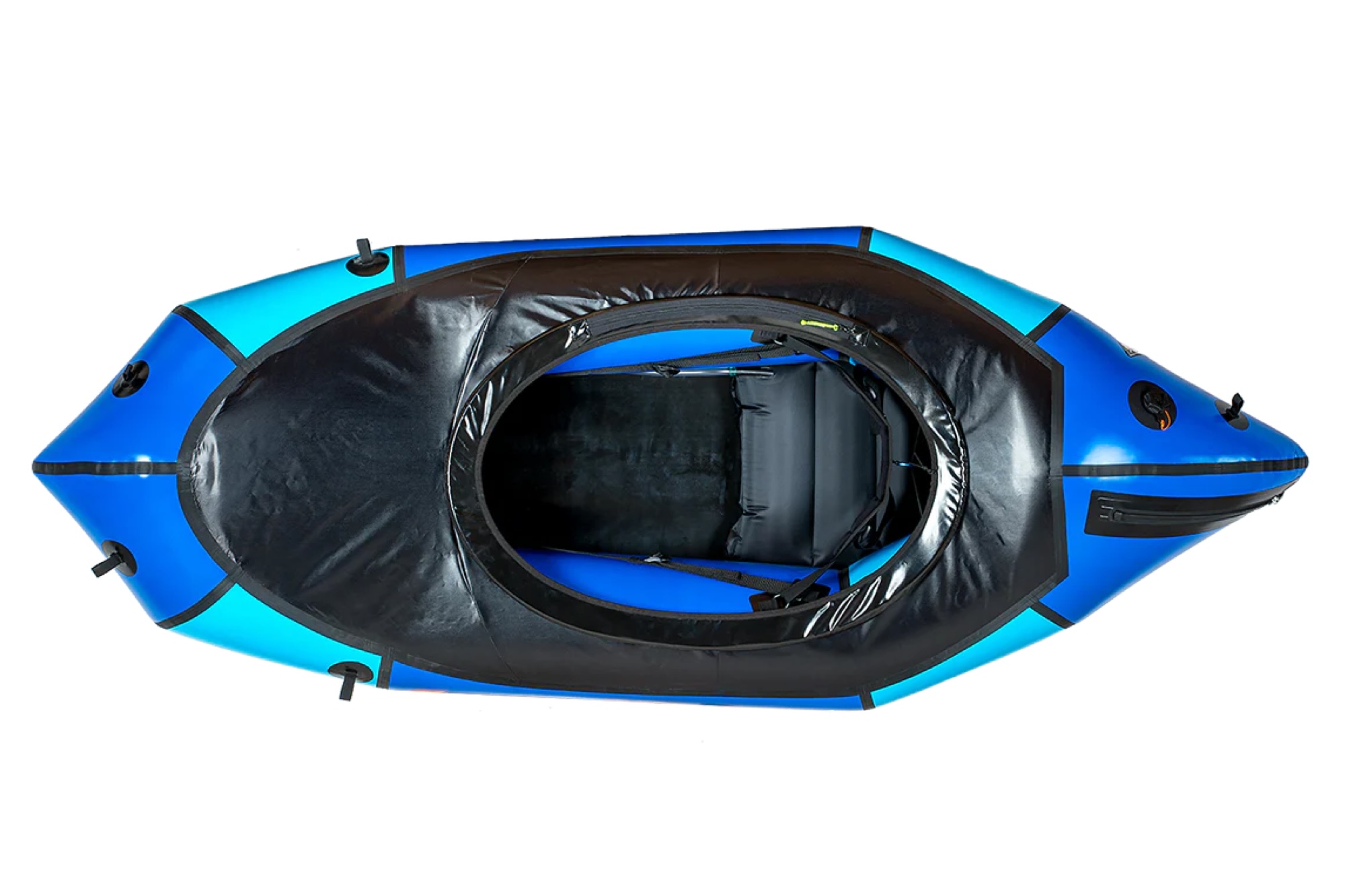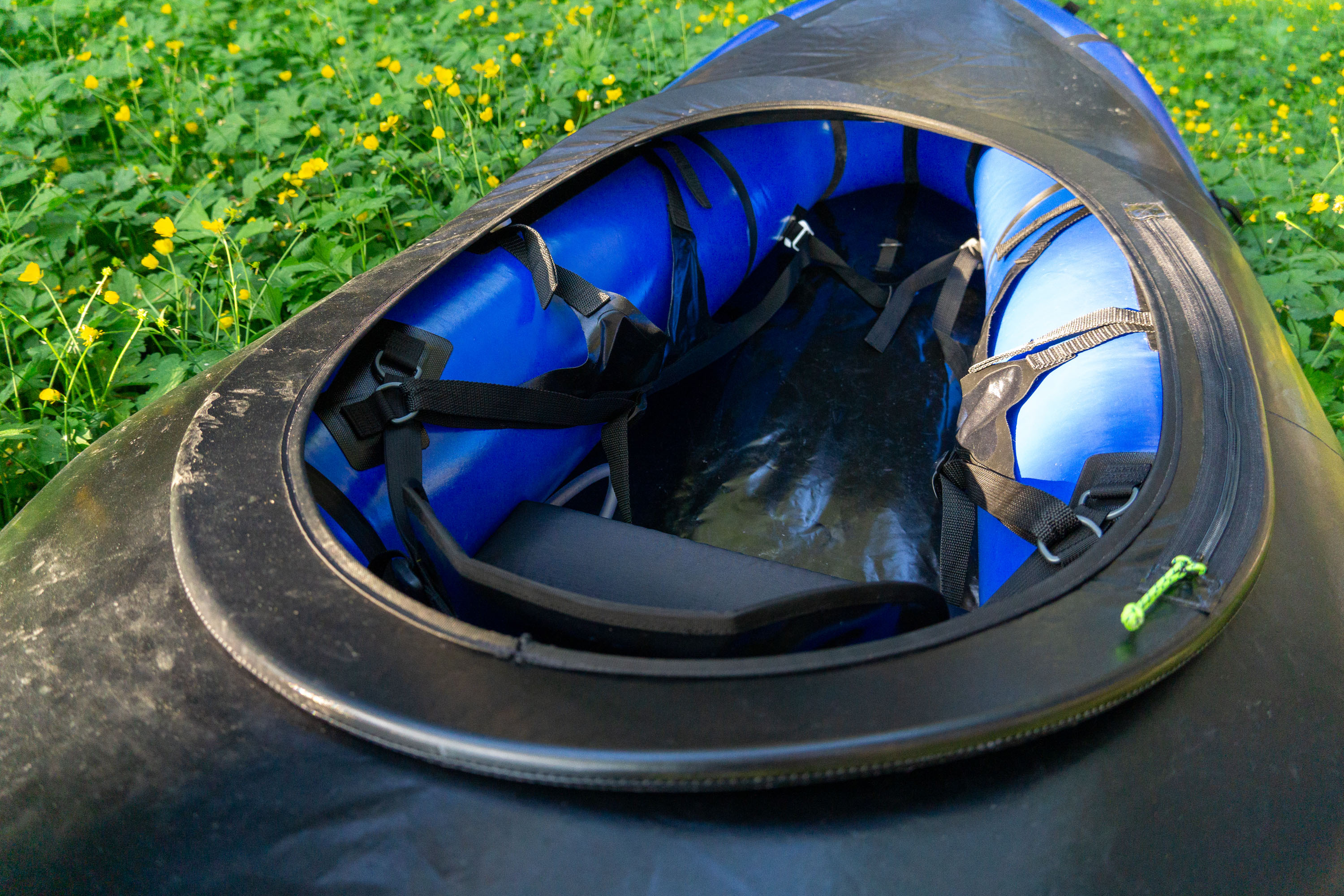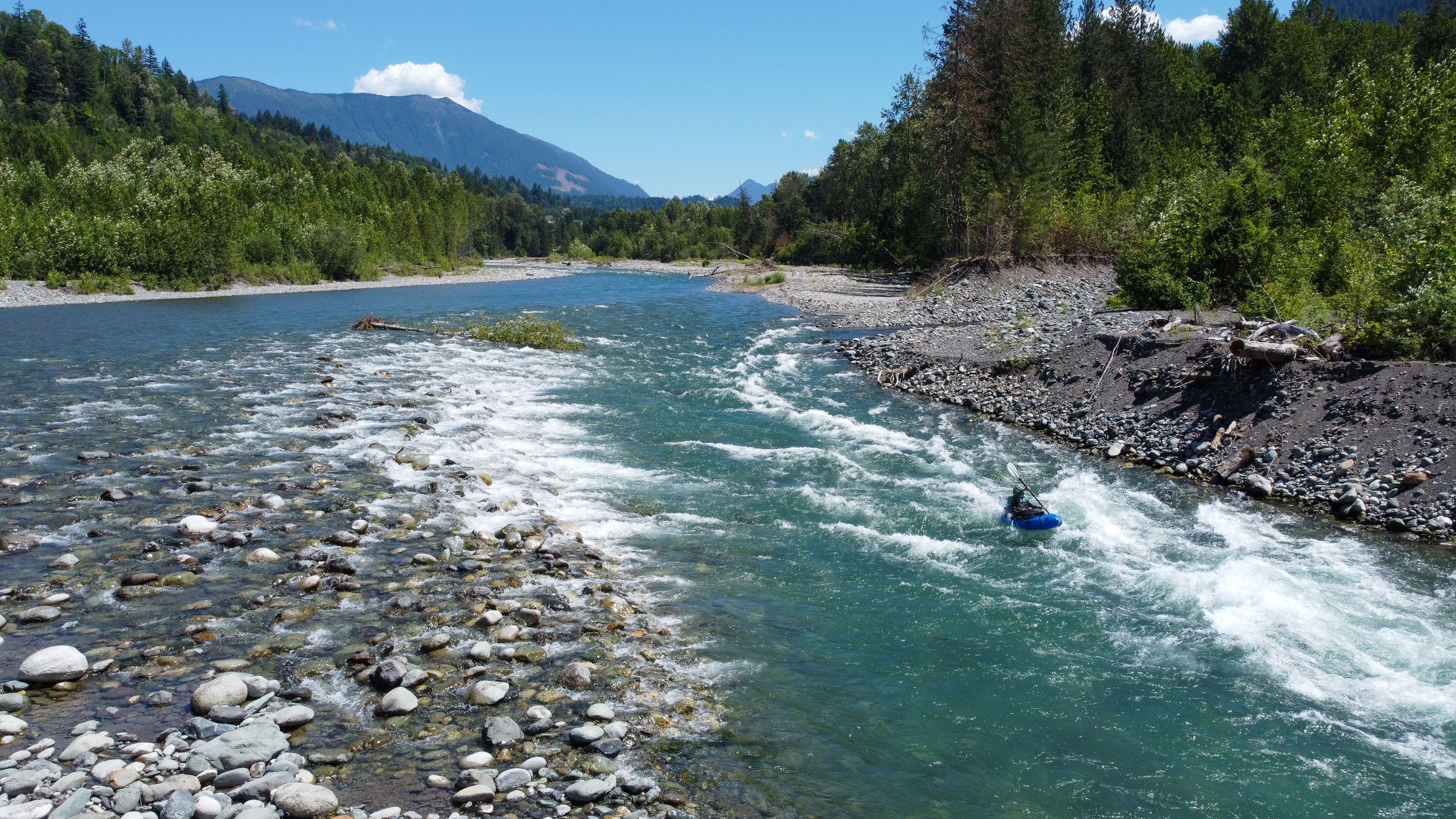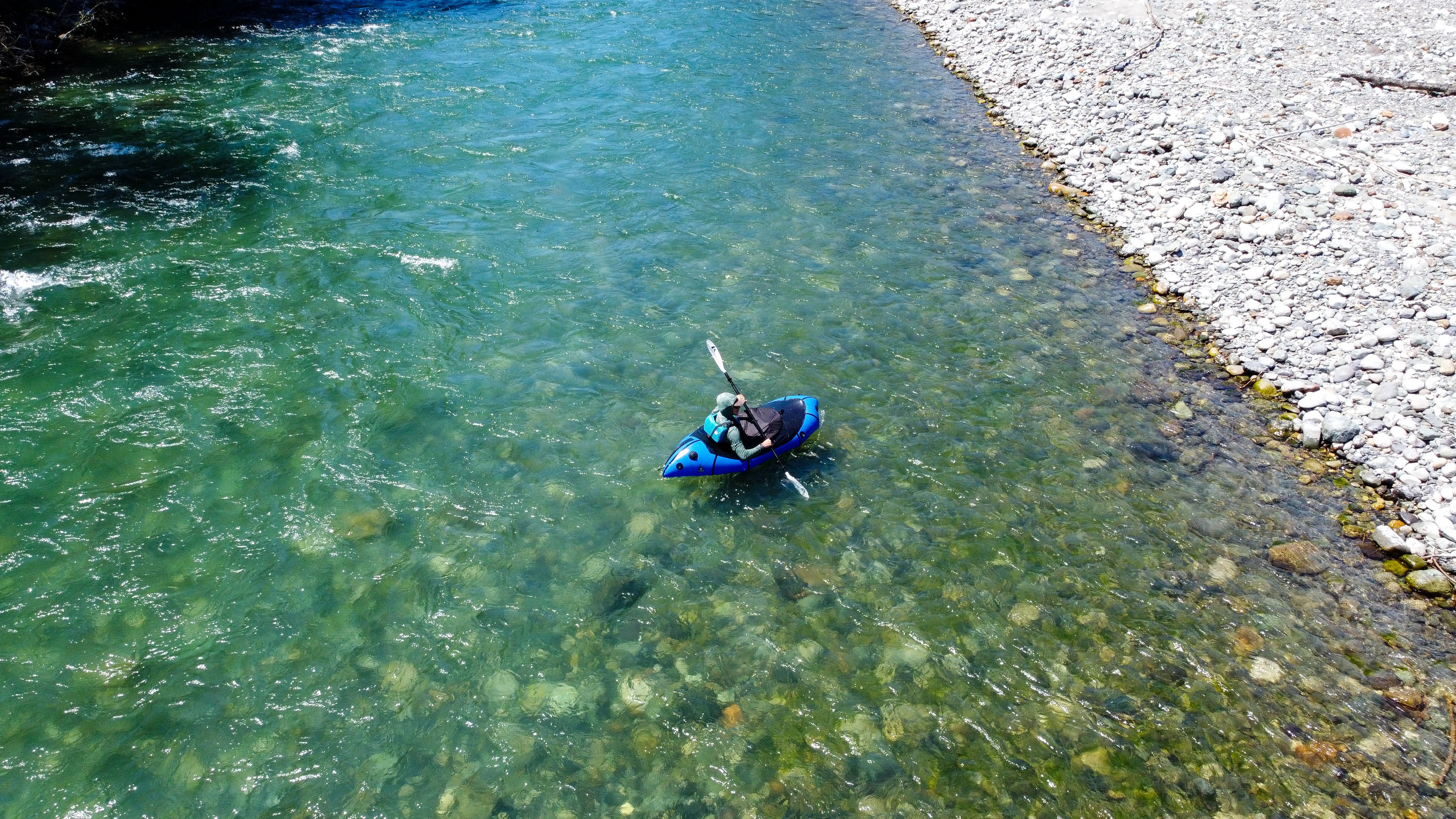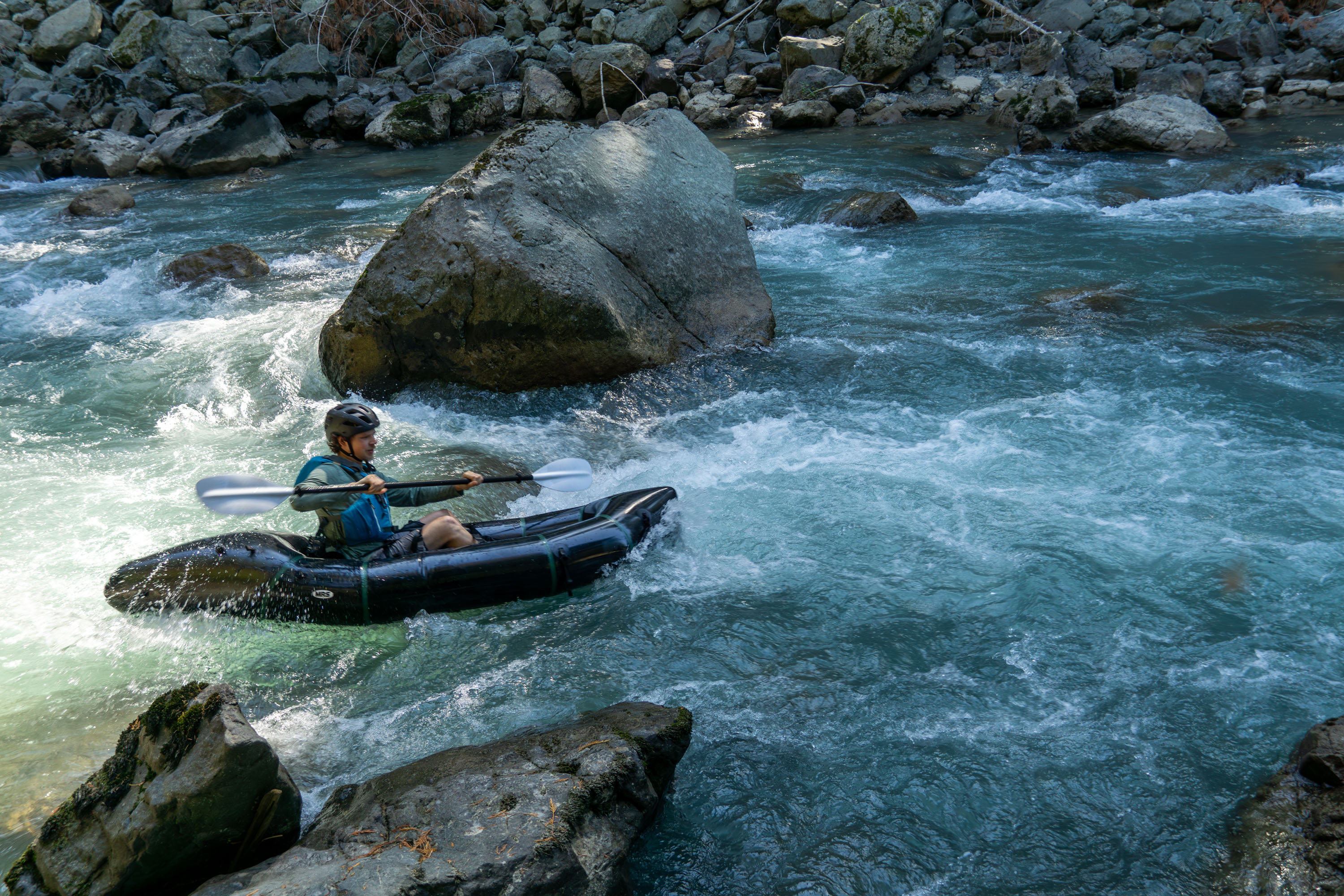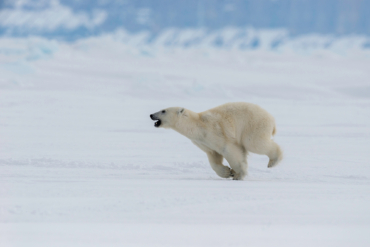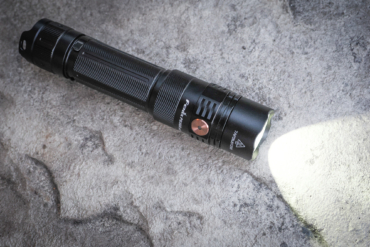First, packrafts needed to exist. Then, these packable inflatables got lighter, got stronger, and got better for their respective niches. But today, boat design is having a real “cake and eat it too” moment — and Alpacka Raft is leading the charge in turning out packrafts that appeal to the multisport among us who don’t like to compromise.
Modeled after the brand’s diminutive Scout raft, the Whitewater Refuge takes a page out of the dream journals of the primordial packrafters who vied for a packable raft that was light enough to navigate the hard country of Alaska with on their backs, but also capable enough to enjoy some deep backcountry whitewater. This summer, I jumped in with both feet and tested the raft in the rivers of the Pacific Northwest.
In short: Alpacka continues to push the envelope, refining packrafts like the Whitewater Refuge that are tailor-made to excel in the brand’s groove in the whitewater spectrum. For the long-distance traverse hounds that aren’t afraid to carry their packrafts over tussocks and mountain passes, the WW Refuge may be the ideal boat. While there are a few caveats regarding light weight and limited room for cargo, overall, this raft is top-notch.
For a full rundown on the Alpacka Rafts lineup and more, check out GearJunkie’s full guide to the Best Packrafts.
Editor’s Note: Alpacka Raft has retooled the Whitewater Refuge slightly to add 2-point thigh straps, but it is still available under the simpler name of the Refuge.
- Weight: 6 lbs., 11.2 oz.
- Load Capacity: 250 lbs.
- Packed Size: 15" x 7"
- Water Rating: Class I-III
- Material: Proprietary lightweight 210D nylon hull and 840D nylon floor
- Tube Diameter: 10"
- Interior/Exterior Length: 46.5-49.5" / 87-89.5"
Pros
- Impressive whitewater ability in a small package
- Full-featured with a TiZip, thigh straps, and whitewater deck
- Tough 840D floor material resists bumps and bruises
- Shorter length turns on a dime
Cons
- A little small for a full expedition boat
- Thigh strap tag ends can become snagged when entering
- Lower load capacity
Alpacka Whitewater Refuge: Review

First Impressions on the Water
“This thing even has thigh straps, dude. Dig the lean on it!” I dug my knees into the tubes of the raft and leaned it over hard to better flourish its abilities. Maybe a little too hard, as I quickly lost balance and took the first splash of the day not 50 feet from the put-in.
The glacial outflow rivers of Washington’s Cascade Range are particularly chilly in spring, and as I ejected I felt the cold realization that this wasn’t your typical bash-around whitewater raft, as well as not a small portion of embarrassment.
But that feeling wouldn’t last long. By the end of the run, I’d understand that the WW Refuge is far from a slouch — it just requires a lighter touch. Once I understood that, the real fun began.
The WW Refuge landed at the same time that Alpacka rolled out its GnarMule, a boat that took the burly backcountry meat hauler of their Mule Raft and souped it up with all the accouterments for whitewater paddling. With Alpacka crossbreeding its rafts and churning out some truly specialized designs, taking the Refuge and tuning it for some bigger water was only natural.

The non-whitewater version of the Refuge precedes the WW version by a year and was designed by lifting lines from the Scout, Alpacka’s plunk-around flatwater boat. The 10-inch tube diameter is also the same, which helps to keep the weight down when compared to the 11.7-inch tubes of the Classic raft.
The boat itself measures 87 inches long for the medium size boat I tested, and it sports a flatter rockered hull than the Rally Hull design of most whitewater boats in the Alpacka lineup. The stern of the boat also comes to a point versus the blunted sterns of the bigger water boats.
The packed size and weight, however, is where all the tradeoffs become worth it. With the full complement of whitewater rigging, the WW Refuge tips the scales at a scant 7 pounds, which is nearly a full pound lighter than a Classic raft (with a whitewater deck and no rigging to speak of). A pound may not sound like much, but when you’re 35 miles into a traverse of the Brooks Range — you’ll find nearly any reason to jettison weight.

Packed up, the boat fits into an 8- by 20-inch stuff bag, which rides atop a backpack as happily as it does stashed inside on shorter trips. It’ll never be as compact as you want it to be, but compared to other boats on the market, this is close to the most capable to low-bulk-ratio boat out currently.
The WW Refuge only comes in one upper configuration, and that’s a permanent whitewater deck with a coaming and an ultralight spray skirt to boot. The setup kept me reasonably dry — even after taking not a small number of waves over the bow. The only water ingress came from where the skirt met an odd corner of my life vest, and even then it was more cooling than anything.

Inflation of the raft is a snap and uses Alpacka’s proprietary Temper Assist valve over the industry-standard Leafield D7. This valve works great, and threads onto the included inflation pump sack. The valve is also receptive to other brands’ electric-powered pumps, though it won’t be a perfect mate.
Looking at the overall design, the bow has four loops for tying down an extra kit or a bow bag, while the stern only sports one grab loop. This means you won’t be able to rig up a tow strap, though lining the boat through difficult water would be possible. A TiZip waterproof zipper also comes standard, and it opens up the interior of the boat to storage on long traverses.
The Full Whitewater Treatment

Don’t let the more diminutive stature fool you — the WW Refuge has chops.
Alpacka doled out the full complement in making it whitewater-savvy: slapping on a full whitewater deck, four-point thigh straps, foam backband, foot brace, and a stronger 840-denier floor. All of this amounts to a boat that Alpacka says will be “fully comfortable taking on wilderness class III,” and after testing, we’re liable to believe it.
To better gauge the packraft’s capabilities, I recently took it for a 25-mile rip on the Sauk, a National Wild and Scenic River that drains the depths of the Glacier Peak Wilderness in Washington state. The water boils in a glacial blue-green and cuts out of the mountains, muscling across gravel bars on its way to a confluence with the mighty Skagit. In terms of testing grounds, you’d be hard-pressed to manage a better hydraulic playground, and as we slipped from the launch (after a brief re-rig), we got straight to the task.

Immediately, the nimbleness of the short hull length was apparent, and I dipped in and out of holes with ease. One thing that rivers in Washington have in excess is wood, and while an unusually warm spring had done well to flush things out, there was still enough to require staying on our toes. Combined with the thigh straps that I was now very aware of, this boat cuts around a river.
Sized appropriately, the WW Refuge situates the paddler with their feet pressed against the end of the bow, with knees bent in an athletic stance. The seat is a holdover from the Scout raft, which is a bit smaller and less comfortable than the larger seats in other Alpacka boats. That being said, I found a full day in the saddle to be manageable, with occasional breaks, of course.

With a lesser-angled bow than Alpacka’s other whitewater boats, I was curious to see how the WW Refuge would clear wave trains. And while on another test run on British Columbia’s Chilliwack River, I found the answer: quite well. The shorter stature here also helped the boat pivot out, and I had a hoot blasting around on Class III water.
During one portion of the Sauk, a long staircase of boulders stood between us and our egress and required a certain amount of rock boofing to navigate. An after-trip inspection showed no mark on the bottom of the boat, and knowing that it had the 840-denier floor (standard for Alpacka’s other rafts) kept me from otherwise portaging the section.

One of the few gripes I could muster by the end of the day was the tail ends of the thigh straps, which pull rearward for convenience and tend to drape down, getting stuck in between your knee and the strap when reentering the boat. A quick fix would be trimming and sealing the straps to suit the length needed, and it’s what Alpacka recommends.
The boat is also only available in the fixed whitewater deck configuration, which helps limit the complexity and bulk of a removable system. But, it does make water extraction a bit more of an interpretive dance at the end of the day.
With such abilities in the rough stuff, the WW Refuge could easily be thought of as a lighter-weight cousin to the Alpacka Expedition. At more than a pound and a half lighter, it makes a strong case as the go-to for trips where whitewater is the goal, but a long and arduous overland stands between you and the water.
A Small but Capable Load Hauler

During my testing, I also loaded up the WW Refuge with a hefty overnight load for paddling on Baker Lake, a broad elbow of water that flanks the stratovolcano Kulshan (Mt. Baker). Here I wanted to test the paddling manners under a load, as well as see just how much kit I could cram into the tubes.
Keeping in mind that the total weight limit of the raft is 250 pounds (275 pounds for size large), I loaded in tents, sleeping bags, cook kits, and food through the TiZip aperture in the stern of the boat. The tube diameter on the raft is 10 inches. While on the smaller end, it still opens up inside to a fairly cavernous area for stashing gear inside.
With a 16-inch-long aperture, you’ll need to be more careful with your packing to ensure that you can fit everything through the TiZip. But, once inside, it’s easy to maneuver things around. Two interior toggles are located in each tube to aid in securing down dry bags, and they mate well with Alpacka’s small-size CargoFly Internal Drybags.

Loaded Down: How It Performed
As we set off, it was hard to even tell that I was loaded down. With the load lowering the center of gravity, the boat plugged along even-keeled and unperturbed. You’d likely only want to pack it this full during flatwater passages, but I was impressed with the overall stability.
I did find during our transit that the shorter length of the WW Refuge means it’s more liable to wander in flatwater paddling, which is a tradeoff for its nimble ability in navigating water like boulder gardens. A good high-angle stroke will generally keep you going where you need to go, however.
After landing at the opposite end of the lake, we deflated our boats for a quick jaunt on trail to our intended campsite. As with any TiZip-equipped boat, you’ll want to be conscious about rolling the zipper up. Always begin rolling your boat from the bow to compress the zip as little as possible. Regular cleaning and lubrication will also keep the slider happy.
Alpacka Whitewater Refuge: Conclusion

The question many may consider is: Can the Whitewater Refuge be my only boat? For certain people, I don’t see any reason why not.
If you’re angling for bigger water, something like an Alpacka Expedition or Kokopelli Nirvana will likely serve you better. The lower overall weight rating of the WW Refuge will also have folks who want to do longer unsupported expeditions looking elsewhere.
But for most everything else, the Whitewater Refuge offers the little-compromise solution. Sans sprayskirt, it is perfectly amenable to flatwater paddling. And stripped of most everything else, you pretty much have a Scout with a TiZip and deck on it. If you rig it back up to full tilt, you’ve got a lightweight craft that will bash through waves with the best of them — and come out smiling on the other side.

